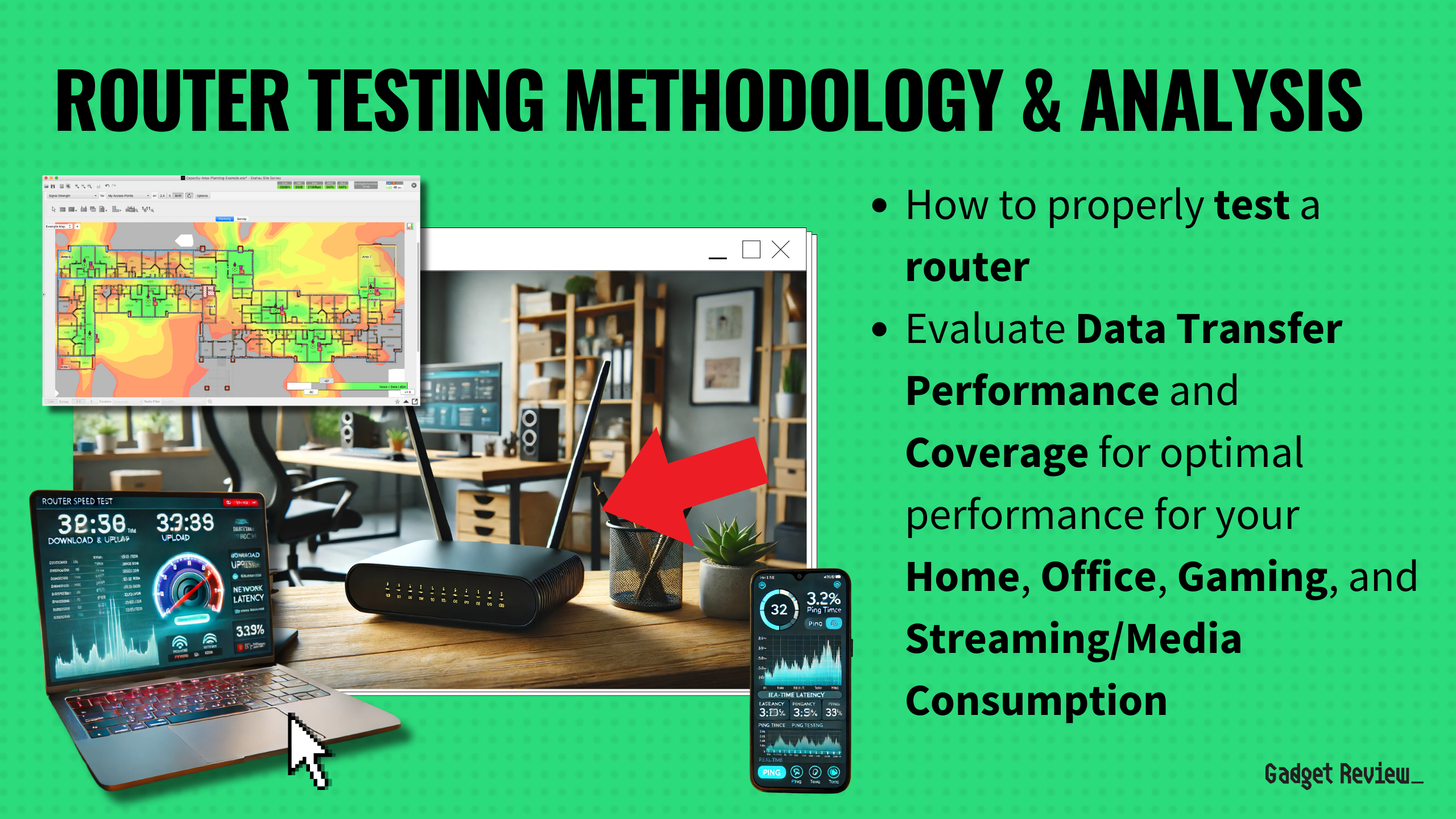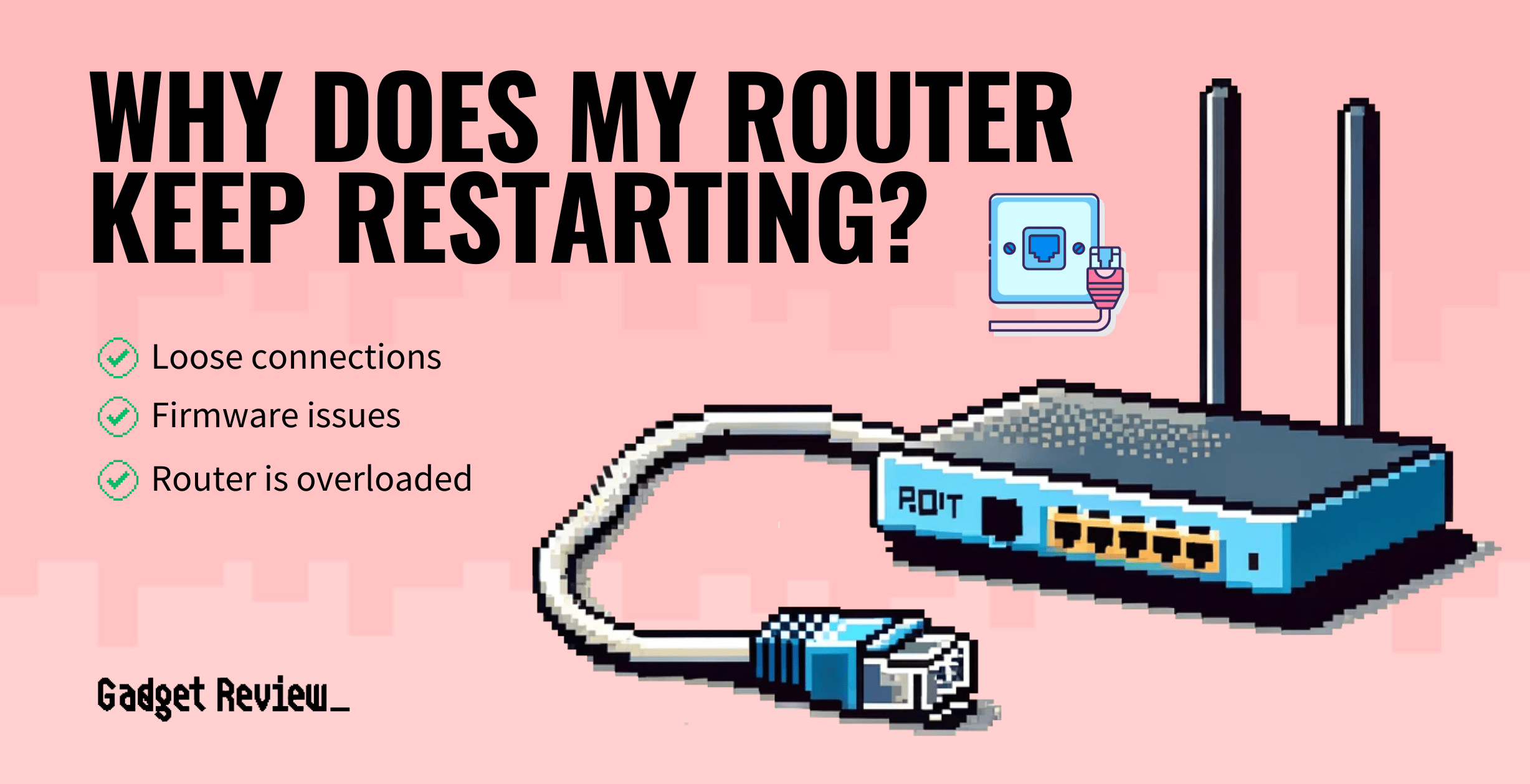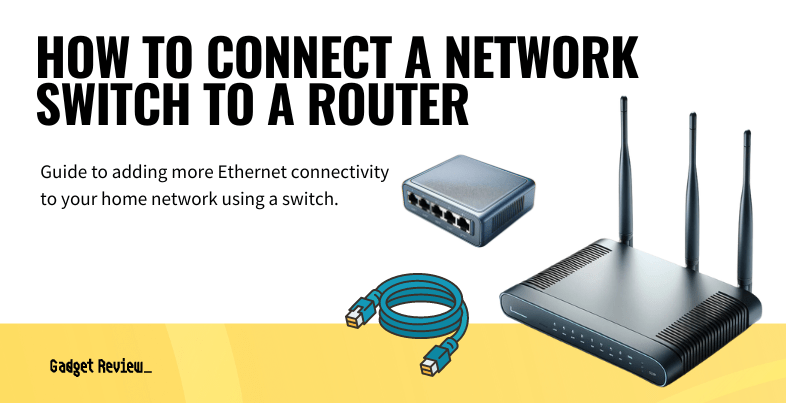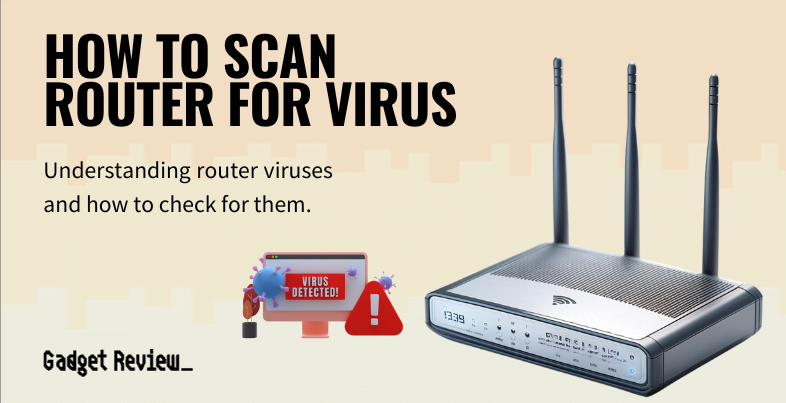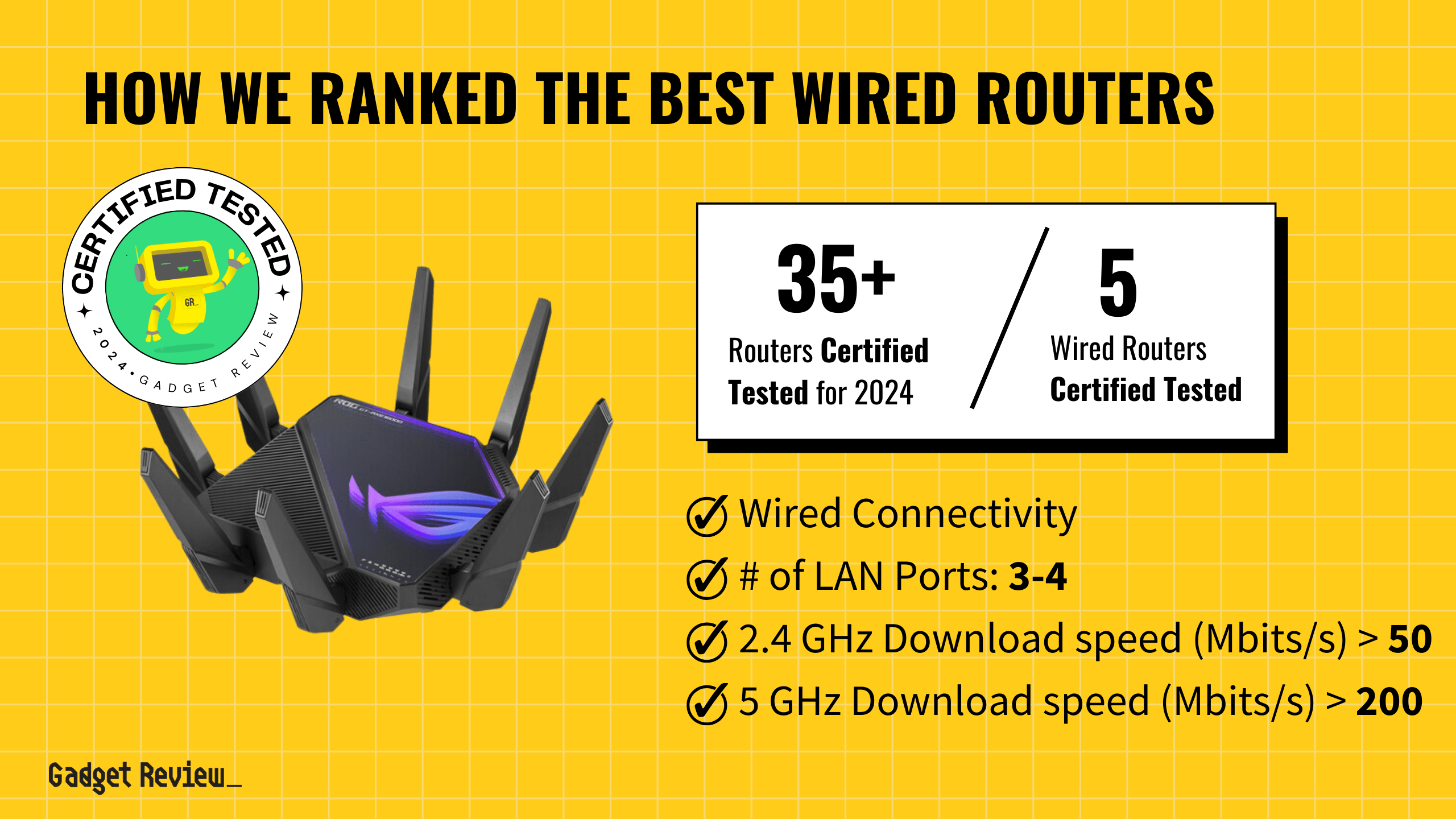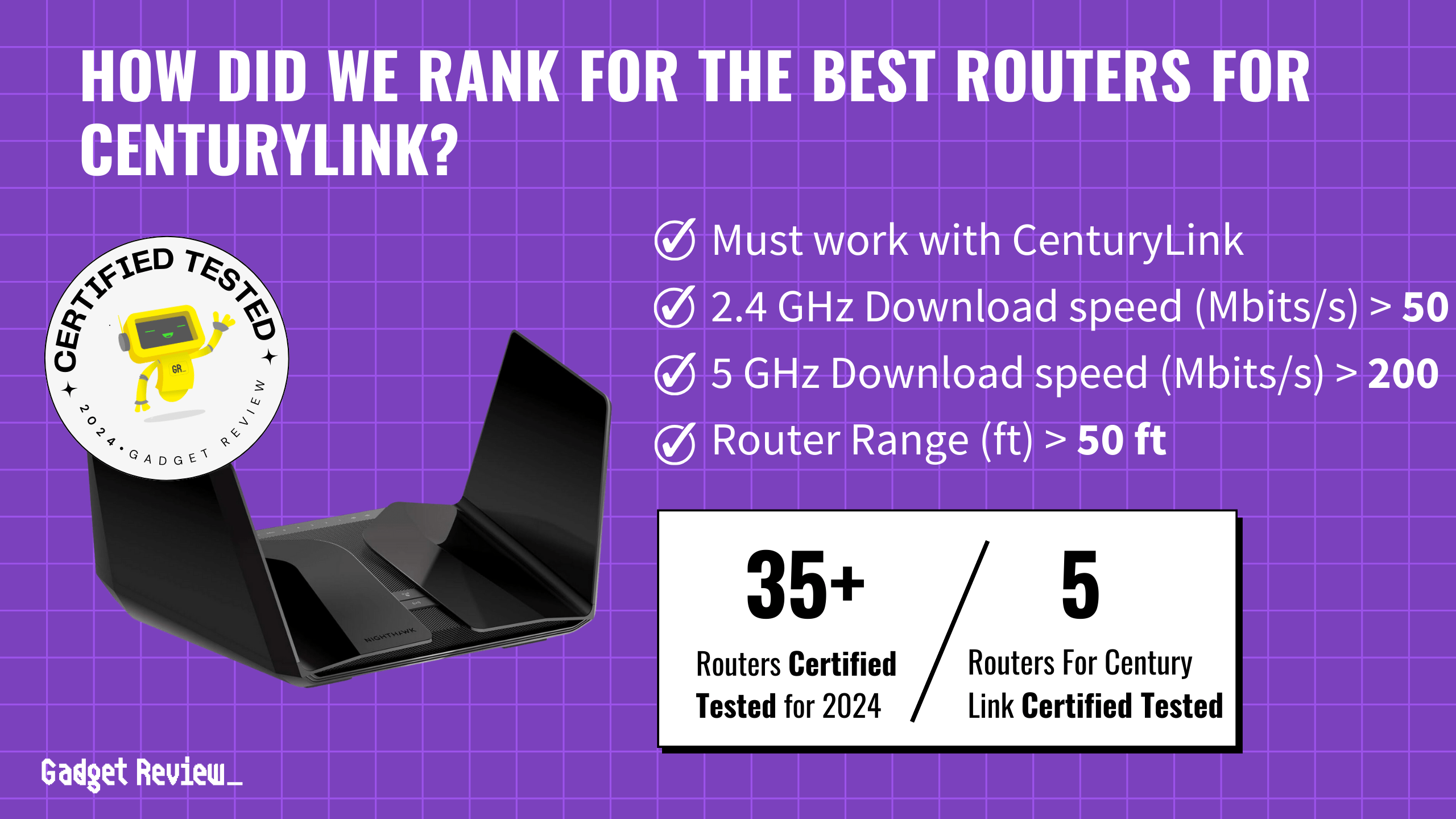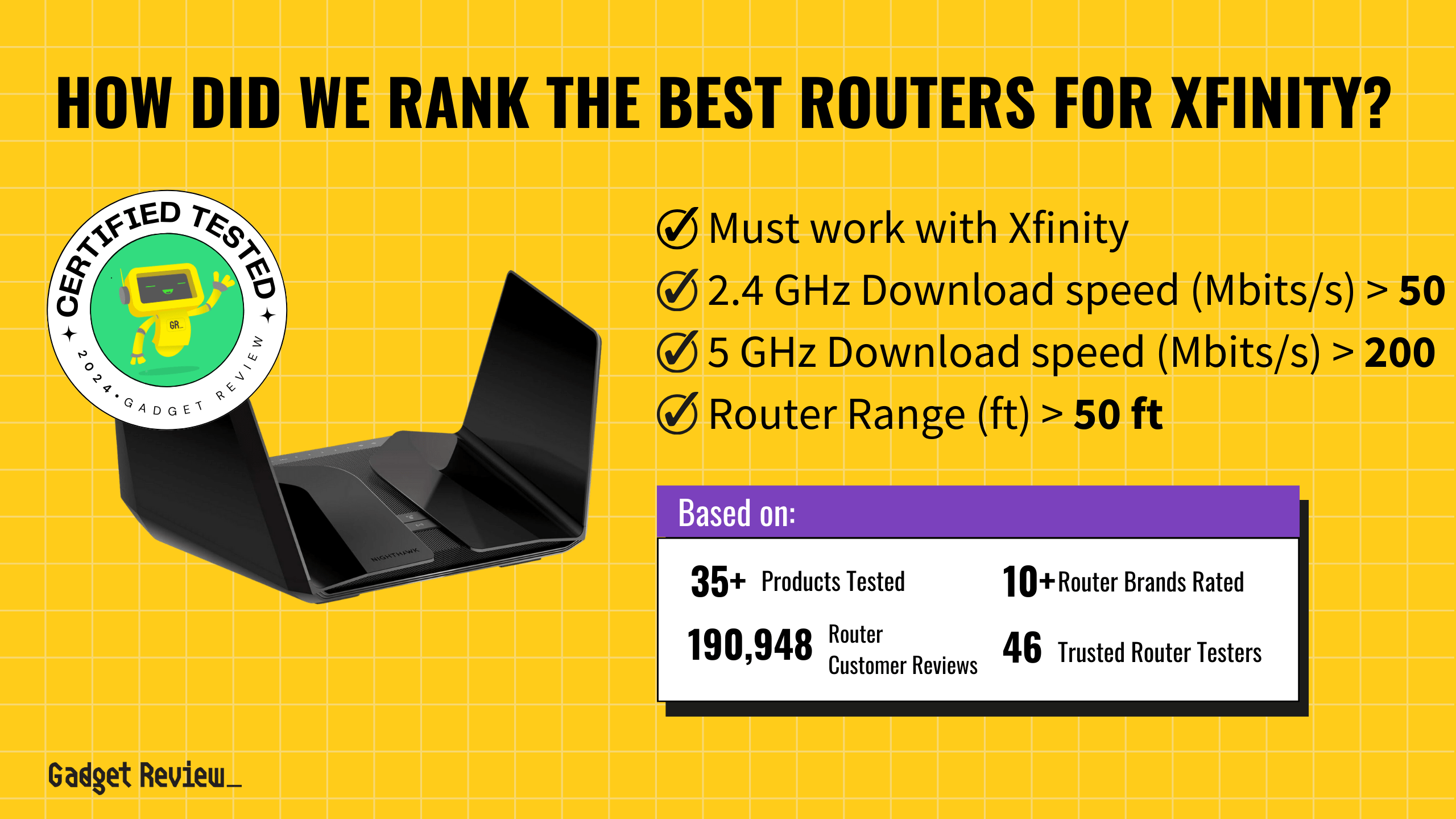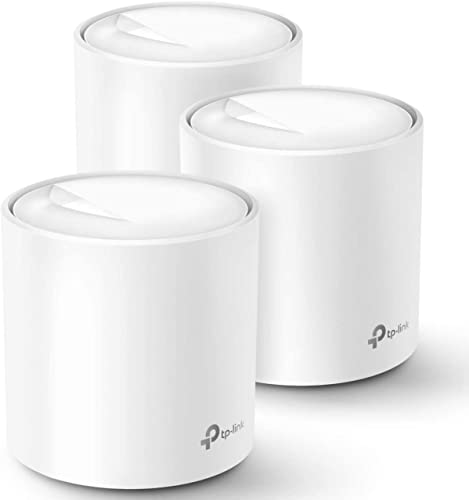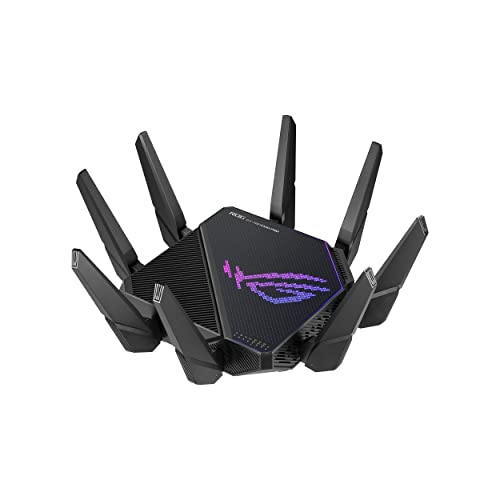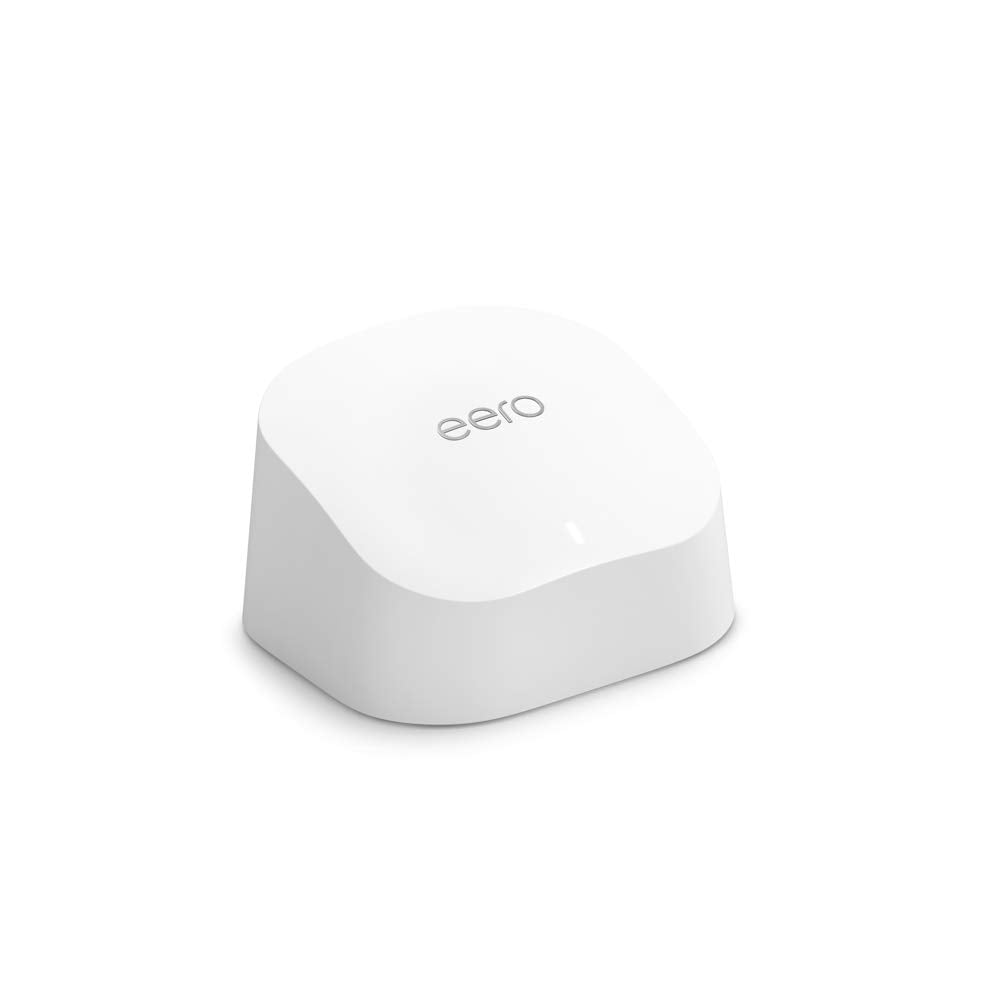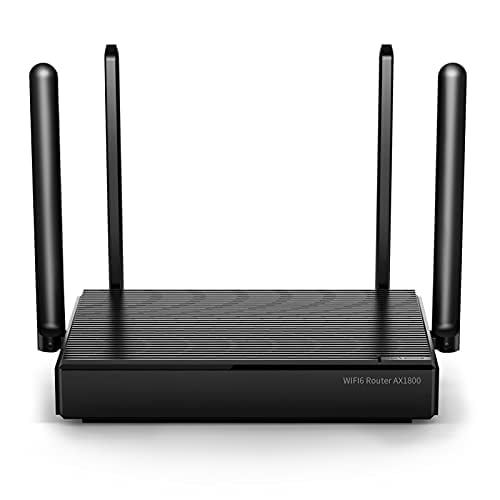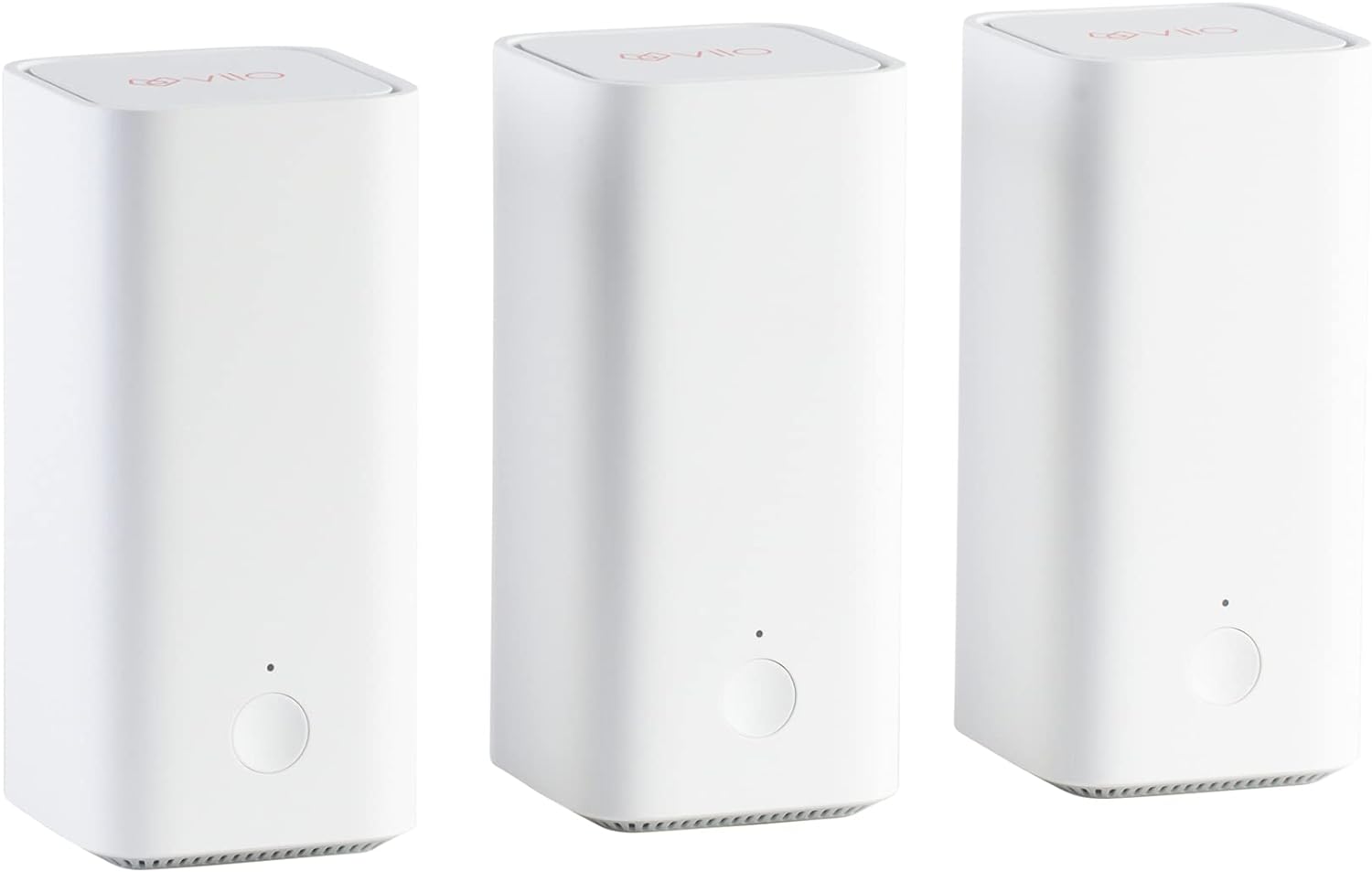When picking a fiber optic router, you need something that can keep up with today’s high-speed internet demands. The best ones support both 5GHz and 6GHz bands, offering blazing 6GHz download speeds over 500 Mbps. We’ve rounded up the top four routers from our evaluation of 37 models.
We analyzed 194,514 reviews, filtering out unreliable sources to present only the most trustworthy insights. Using our Scientifically proven True Score system, we certify products as tested and filter out fake and low-quality reviews. These top routers excelled in performance, reliability, and feature set, making them ideal for your high-speed fiber optic internet needs.
How Did We Rank the Best Fiber Optic Routers?
Our evaluation of the best fiber optic routers draws from an extensive review of over 200 websites, incorporating testing methodologies, expert reviews, and customer feedback. By identifying 1 required test result, 2 nice-to-have test results, and 1 must-have specification, we crafted a buying guide that is both precise and comprehensive, tailored to meet the needs of discerning buyers.
Our commitment to unbiased reviews is powered by our ‘True Score’ system, targeting low quality and fake reviews. When you shop through our links, you’re backing our mission. Dive deeper to see how.
?️ Minimum Specifications
- Must have frequency bands more than 5.0 GHz.
? Test Criteria
- 6 GHz Download Speed: A download speed on the 6 GHz band of at least 500 Mbits.
? “Nice To Haves”
- 5 GHz Download Speed: A download speed on the 5 GHz band of at least 200 Mbits.
- Router Range: A range of at least 50 feet before the signal from the router begins to become noticeably weaker.
Latest Updates
- 06/18/2024: Republished the list to include the best fiber optic routers based on our True Score system.
Top Fiber Optic Routers For 2025
Prices accurate at the time of publishing

Best Overall

Runner Up

Best Value

Best Budget

Best Mid-Range

Premium Pick
Asus ROG GT-AXE16000
Best For Vpn
Ideal for content creators and gamers on fiber optic internet, the Asus ROG GT-AXE16000 offers top upload speeds for seamless performance.
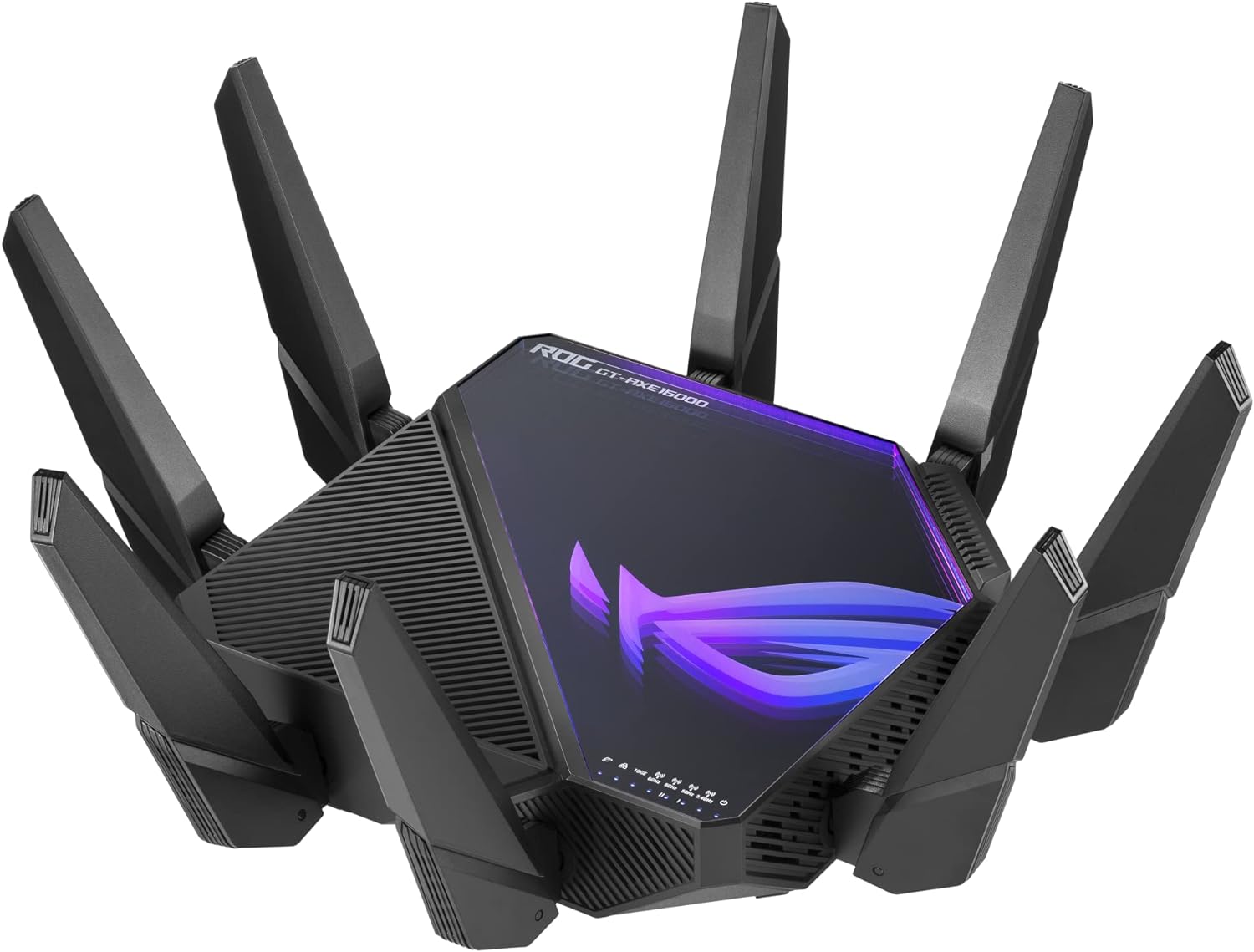
True Score
85865Experts
901kCustomers
Absolutely Fresh
 SAVE $251$699.99$449.00
SAVE $251$699.99$449.00Read More
Snapshot
Reasons to Buy
- Good WiFi Upload/Download Speed
- Easy to Setup and Configure
- Impressive Range of Coverage
Reasons to Avoid
- Poor Latency
Specifications

# of LAN Ports 4 
Frequency Bands 2.4 GHz, 5 GHz-1, 5 GHz-2, 6.0 GHz 
MU-MIMO Support Yes 
Wireless Standard AX 
Mesh System Yes 
Quality of Service Prioritization Yes 
# of Phone Ports n/a 
# of WAN Ports 3 
App Compatible Yes 
Available Storage 256MB 
Band Technology Quad 
Data Encryption Type WPA3 
Energy Star Certified n/a 
Integrated Modem No 
LAN Ports – 
Number of Antennas 8 
Parental Controls Yes 
Processor Cores Quad 
Processor Speed 2 Ghz 
WiFi Range 8000 sq.ft 
WiFi Speed 16Gb 
Wired Speed 1000 Mb All Specs
Test Results
2.4 GHz Download speed (Mbits/s) 113 5 GHz Download speed (Mbits/s) 639 6 Ghz Download speed (Mbits/s) 615 Latency (ms) 69 Router Range (ft) 0 2.4 GHz Upload speed (Mbits/s) 154 5 GHz Upload speed (Mbits/s) 790 6 Ghz Upload speed (Mbits/s) 790 All Tests
All Retailers
- $449.00$700Save $251
- $449.99$600Save $150
Our Verdict
If you’re a content creator, streamer, or remote worker with a fiber optic internet subscription, the Asus ROG GT-AXE16000 is a fantastic choice with exceptional upload speeds. Those reach a superior 154.1 Mbits/s on the 2.4 GHz band, 790 Mbits/s on the 5 GHz band, and an impressive 790.1 Mbits/s on the 6 GHz band, supporting ultra-high-definition streaming, competitive gaming, and robust smart home ecosystems. This wide range of high-speed capabilities ensures that every device connected to your network experiences optimal performance, from smart TVs and gaming consoles to home automation devices.
Despite a latency of 69 ms, which is higher than the other models on the list, it remains a solid performer for activities requiring real-time interaction, such as casual gaming, live streaming, and video conferencing, ensuring that users experience minimal delays. Its edge in upload speeds, especially on the higher bands, supports fiber optic internet users who need to maximize their connectivity for uploading and downloading content-intensive tasks.
If your setup demands handling numerous devices and bandwidth-heavy operations, the Asus ROG GT-AXE16000 is a reliable router to consider. Although it is a premium option with somewhat higher latency than competitors like the Netgear Nighthawk RAXE300, its superior performance, especially in upload capabilities across all bands, makes it a worthy investment for seamless content creation, gaming, and streaming experiences.
Read Less
Category Snapshot
Routers
- Total Brands/Products Tested
12 Brands, 37 Products
- Top 2 Brands
Netgear, Asus
- Price Range (Budget-Premium)
$45-$600
- Average True Score
79.42
- Important Test Criteria
Download & Upload Speed (bits/second)
Range (feet/meters)
- Most Trusted Testers

- Top Router Experts
- Typical Warranty
1 year
- Covered by Insurance
Yes – AKKO

Best Overall

Runner Up

Best Value

Best Budget

Best Mid-Range

Premium Pick
Netgear Nighthawk RAXE300
Best For Long Range
Ideal for fiber optic users with large homes, the Nighthawk RAXE300 offers fast speeds, extensive range, and minimal latency for gaming and streaming.
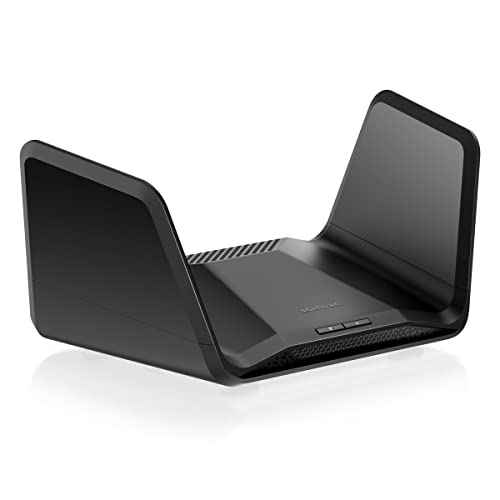
True Score
83829Experts
894kCustomers
Absolutely Fresh
 SAVE $135$299.99$164.99
SAVE $135$299.99$164.99Read More
Snapshot
Reasons to Buy
- Superb Wi-Fi speeds
- Wide range
- Simple setup
Reasons to Avoid
- Limited range (6GHz)
- No USB A port
- Subscription-based security solutions
Specifications

# of LAN Ports 6 
Frequency Bands 2.4 GHz, 5.0 GHz, 6.0 GHz 
MU-MIMO Support Yes 
Wireless Standard AC, AX, N 
Mesh System No 
Quality of Service Prioritization No 
# of Phone Ports 1 
# of WAN Ports 1 
App Compatible Yes 
Available Storage 256MB 
Band Technology Tri 
Data Encryption Type WPA-PSK, WPA2-PSK, WPA3 
Energy Star Certified No 
Integrated Modem No 
LAN Ports 4 Gb Ethernet 
Number of Antennas 6 
Parental Controls Yes 
Processor Cores Quad 
Processor Speed 1.7GHz 
WiFi Range 2500 sq.ft 
WiFi Speed 7.8 Gb 
Wired Speed 1000 Mb All Specs
Test Results
2.4 GHz Download speed (Mbits/s) 222 5 GHz Download speed (Mbits/s) 852 6 Ghz Download speed (Mbits/s) 757 Latency (ms) 5 Router Range (ft) 170 2.4 GHz Upload speed (Mbits/s) 0 5 GHz Upload speed (Mbits/s) 175 6 Ghz Upload speed (Mbits/s) 247 All Tests
All Retailers
- $164.99$300Save $135
- $239.97$400Save $160
- $299.99
- $379.99$399Save $19
Our Verdict
If you have fiber optic internet and a large home, the Netgear Nighthawk RAXE300 will keep up with your internet thanks to its top-tier speeds, wide range, and low latency. With download speeds of an unmatched 221.65 Mbits/s on the 2.4 GHz band, 851.6 Mbits/s on the 5 GHz band, and 756.8 Mbits/s on the 6 GHz band, it’s built for heavy-duty tasks like competitive gaming, 4K streaming, and immersive VR experiences. Upload speeds of 175 Mbits/s on the 5 GHz band and 247.2 Mbits/s on the 6 GHz band ensure rapid data transfers, perfect for high-definition video calls, online gaming, and cloud computing.
Boasting an unbeatable minimal latency of 5 ms and range of 170 ft, this router promises minimal interruption over extensive areas, catering to competitive gamers requiring precision and large homes needing consistent coverage. Equipped with advanced security features and supporting the latest wireless standards, the Nighthawk RAXE300 is a forward-thinking choice if you want to future-proof your home network.
With its superior download and upload capabilities, low latency, and far-reaching coverage, the Nighthawk RAXE300 is a reliable router for gamers, streamers, home offices, and small businesses. While it may not have the absolute fastest download speeds, its robust performance and capacity to handle multiple high-bandwidth activities simultaneously offer a great value if you want to maximize your fiber optic internet service.
Read Less

Best Overall

Runner Up

Best Value

Best Budget

Best Mid-Range

Premium Pick
Eero Max 7
Best For Wired
Eero Max 7, ideal for fiber optic users, excels in 6 GHz for high-demand activities, ensuring lag-free gaming and smooth 4K/8K streaming.
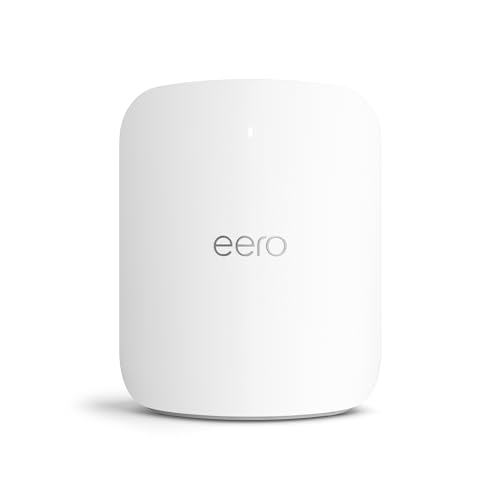
True Score
79797Experts
85316Customers
Mixed Reviews
 SAVE $120$599.99$479.99
SAVE $120$599.99$479.99Read More
Snapshot
Reasons to Buy
- Exceptional Download WiFi Speed
- Easy Installation and Configuration
- Low Latency
Reasons to Avoid
- Poor 2.4 GHz Upload Speeds
- Short Range of Coverage
- Limited Port Space
Specifications

# of LAN Ports 4 
Frequency Bands 2.4 GHz, 5.0 GHz, 6.0 GHz 
MU-MIMO Support Yes 
Wireless Standard BE 
Mesh System Yes 
Quality of Service Prioritization No 
# of Phone Ports n/a 
# of WAN Ports 1 
App Compatible Yes 
Available Storage 4000MB 
Band Technology Tri 
Data Encryption Type WPA2-Personal, WPA3-Personal 
Energy Star Certified No 
Integrated Modem No 
LAN Ports 2 Gb Ethernet 
Number of Antennas 10 
Parental Controls Yes 
Processor Cores Quad 
Processor Speed – 
WiFi Range 2500 sq.ft 
WiFi Speed 4.3 Gb 
Wired Speed 10000 Mb All Specs
Test Results
2.4 GHz Download speed (Mbits/s) 96 5 GHz Download speed (Mbits/s) 1,078 6 Ghz Download speed (Mbits/s) 1,223 Latency (ms) 7 Router Range (ft) 90 2.4 GHz Upload speed (Mbits/s) 75 5 GHz Upload speed (Mbits/s) 411 6 Ghz Upload speed (Mbits/s) 638 All Tests
All Retailers
- $479.99$600Save $120
- $479.99$600Save $120
- $479.99$600Save $120
Our Verdict
If you need a fiber optic router to keep up with high-demand online activities, the Eero Max 7 has remarkable 6 GHz capabilities. Delivering superior download speeds of 1222.5 Mbits/s and upload speeds of 638 Mbits/s, it’s ideal for sizable homes with heavy internet usage by tech-savvy users, streamers, and avid gamers alike.
Leveraging tri-band technology, the Eero Max 7 also impresses on the 5 GHz band, offering download and upload speeds of 1078.5 Mbits/s and 410.6 Mbits/s, ensuring smooth streaming of 4K/8K content, high-speed online gaming, and efficient large file transfers between devices in your network. Its performance on the 2.4 GHz band isn’t as impressive but is still adequate for everyday online needs, with a 95.9 Mbits/s download and 74.8 Mbits/s upload speed.
With a minimal latency of only 7 ms, the Eero Max 7 assures quick response times essential for lag-free gaming and smooth video calls. It provides strong Wi-Fi coverage up to 90 ft, effectively accommodating small to medium-sized homes. In comparison with the Netgear Nighthawk RAXE300, which also supports 6 GHz but at a lower cost, the Eero Max 7 shines with superior speeds on the 6 GHz band, making it the preferred choice if you have intensive streaming habits, VR use, or multiple demanding devices on your network.
Boasting peerless 6 GHz speed, the Eero Max 7 is a formidable option for handling ultra-high-definition content, gaming, and significant internet requirements. Although it comes with a higher price tag, its exceptional performance and mesh networking make it an excellent investment for enhancing your internet experience across various devices.
Read Less

Best Overall

Runner Up

Best Value

Best Budget

Best Mid-Range

Premium Pick
Eero Pro 6E
Eero Pro 6E excels for fiber optic users with its cost-effective tri-band tech, ensuring strong, wide coverage and quick speeds.
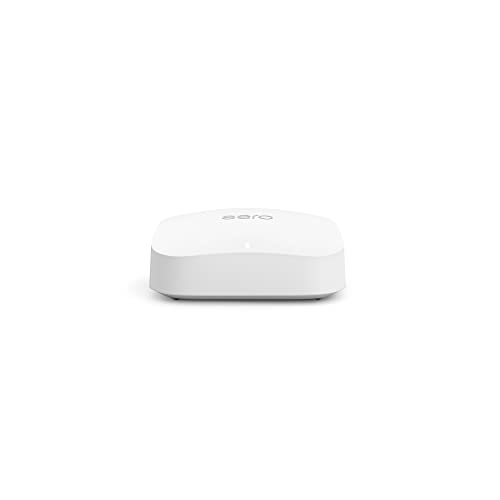
True Score
797812Experts
856kCustomers
Mixed Reviews
 SAVE $65$249.99$184.99
SAVE $65$249.99$184.99Read More
Snapshot
Reasons to Buy
- Good throughput speeds
- Good coverage
- Good smart device support
Reasons to Avoid
- Lacks included security and parental control features
- Not as consistent as some WiFi 6E routers
- Limited wired connectivity
Specifications

# of LAN Ports 1 
Frequency Bands 2.4 GHz, 5.0 GHz, 6.0 GHz 
MU-MIMO Support Yes 
Wireless Standard AC, AX, N 
Mesh System Yes 
Quality of Service Prioritization n/a 
# of Phone Ports n/a 
# of WAN Ports 1 
App Compatible Yes 
Available Storage 4000MB 
Band Technology Tri 
Data Encryption Type WPA2-PSK, WPA3-Personal 
Energy Star Certified No 
Integrated Modem No 
LAN Ports 1 Gb Ethernet 
Number of Antennas 7 
Parental Controls Yes 
Processor Cores Dual 
Processor Speed 1Ghz 
WiFi Range 6000 sq. ft 
WiFi Speed 1.6 Gb 
Wired Speed 2300 Mb All Specs
Test Results
2.4 GHz Download speed (Mbits/s) 215 5 GHz Download speed (Mbits/s) 547 6 Ghz Download speed (Mbits/s) 777 Latency (ms) 0 Router Range (ft) 85 2.4 GHz Upload speed (Mbits/s) 0 5 GHz Upload speed (Mbits/s) 111 6 Ghz Upload speed (Mbits/s) 0 All Tests
All Retailers
- $184.99$250Save $65
- $184.99$250Save $65
- $184.99$250Save $65
Our Verdict
If you’re a fiber optic internet user seeking an affordable yet powerful router, the Eero Pro 6E stands out with its tri-band technology. It offers rapid download speeds of 547 Mbits/s on the 5 GHz band and 777.4 Mbits/s on the 6 GHz band, plus a robust 214.83 Mbits/s on the 2.4 GHz band. This makes it suitable for homes with lots of furniture or longer layouts, supporting lag-free gaming, high-definition streaming, and smart home connectivity within a range of 85 ft—ideal for compact living spaces.
When compared against the Eero Max 7 of the same brand, both have 6 GHz capabilities and have similar ranges. The Max 7 is faster on the 6 GHz band but is more expensive, but the Pro 6E has faster 2.4 GHz download speeds. Opt for the Pro 6E if you value affordable, extensive coverage and decent speeds that support casual gaming and all-encompassing home networks.
The Eero Pro 6E perfectly blends affordability, coverage, and speed. While it may not lead in 5 and 6 GHz speeds compared to other routers on our list, its unmatched 2.4 GHz performance ensures strong connectivity for a wide array of online needs, making it a top pick for fiber optic service subscribers wanting a reliable, cost-effective networking solution.
Read Less
Which Criteria Matters for Testing Best Fiber Optic Routers?
By concentrating on these criteria (1 required, 2 nice to have), you can effortlessly compare routers and evaluate their performance. This approach enables you to make an informed decision and purchase a router that meets your needs.
| CRITERIA | RANGE | REQUIRED | DEFINITION |
|---|---|---|---|
| 6 GHz Download Speed | > 500 Mbits/s | Yes | The maximum speed that the router can reach when downloading on the 6 Ghz band. |
| 5 GHz Download Speed | > 200 Mbits/s | No (Nice to have) | The maximum speed that the router can reach when downloading on the 5 GHz band. |
| Router Range | > 50 ft | No (Nice to have) | How far a device can be from a router before the signal starts degrading. It is worth noting that 2.4 GHz reaches further than 5 GHz. |
Our Trusted Data Sources
We looked at 120+ router reviewers and found that 46 are trustworthy (60%+ Trust Rating). The three we have listed below are our most trusted for routers.
- James Morris – Kit Guru, LinkedIn
- Matt Spencer – TechGearLab, LinkedIn
- Brian Nadel – Tom’s Guide, MuckRack
Interested in a comprehensive analysis of our data sources? We’ve got you covered. Below, you’ll find a detailed list of every router review website we’ve identified, organized by their respective Trust Ratings from highest to lowest. But we didn’t stop there. We’ve meticulously reviewed each publication and verified the data by checking whether the authors have bio links to MuckRack or LinkedIn. We’re committed to not only checking the facts but ensuring their veracity.
Router Test Data & Results
Disclaimer:
Evaluating router performance is more than hardware analysis. While hardware tests are straightforward, the challenge lies in contextualizing the results within the limits of real-world usage. Routers operate under conditions that testers cannot fully standardize, including variations in Internet Service Providers (ISPs), network traffic congestion, discrepancies between advertised and actual internet speeds, and the physical layout of homes. These factors introduce a degree of unpredictability, making it hard to draw universal conclusions. As such, our router recommendations aim to provide useful general guidance, accommodating a wide range of home environments and internet setups.
1. 6 GHz Download Speed (Mbits/s)
The 6 GHz band is the latest band available on routers and is exclusive to routers that use Wi-Fi 6E. It’s slightly faster than 5 GHz bands, but the primary draw behind using 6 GHz is the reduced congestion, which reduces signal interference and as such, can potentially boost latency and speed. The newest devices can connect to Wi-Fi 6E, and because it’s a new standard, all new devices will eventually come to support it.
Because the band is only slightly faster than 5 GHz (if it ends up faster at all) we recommend a download speed of 500 Mbits/s. This is plenty for streaming, playing games, and watching Netflix – or all three across several devices, without seeing lag spikes or buffering. If you have new devices that support Wi-Fi 6E, you’ll need a router that supports the 6 GHz band to take advantage of it. Also, similar to how 5 GHz is shorter range than 2.4 GHz, 6 GHz is also slightly shorter range than 5 GHz.
6 GHz Download Speed
> 500 Mbits/s
Acceptable range of performance
Definition: The top speed the router reaches downloading on the 6 GHz band.
Units of Measurement: Mbits/s
Tools to Measure: Speed-checking software
Why It’s Important:
If you’re connecting a ton of devices to a network, this band offers a high-speed low-congestion way to get them all high speeds on demand.
6 GHz Download Speed (Mbits/s; higher is better; 0 = No Data)
2. 5 GHz Download Speed (Mbits/s)
The much faster 5 GHz band offers up much greater bandwidth and is much, much better at meeting high-speed demands. Streaming high-quality video, using streaming services, gaming, downloading large files and games – the 5 GHz band is what makes all of these activities quick and bearable. It reaches a lower range than the 2.4 GHz band, but it’s also much faster, so you’ll use it more, especially on newer devices that actually support the band.
Given how much you’ll be using this band, we recommend a speed of at least 200 Mbits/s to ensure you’re able to enjoy streaming and gaming on at least a few devices simultaneously. Any lower and you start to run into real bottleneck concerns, such as endless buffering, lagging, or drops in connection.
5 GHz Download Speed
> 200 Mbits/s
Acceptable range of performance
Definition: The top speed the router reaches downloading on the 5 GHz band.
Units of Measurement: Mbits/s (megabits per second)
Tools to Measure: Speed-checking software
Why It’s Important:
This band is used by most modern devices and offers greater speeds that enable activities like gaming and HD streaming on multiple devices.
5 GHz Download Speed (Mbits/s; higher is better; 0 = No Data)
3. Router Range (ft)
Router range is exactly what the name suggests: how far can you get from the router before you start experiencing issues with your connection? The complicating factor is the simple fact that range depends on the band you’re using. 2.4 GHz is a band that offers greater range, so it gives tests results that show a greater range than tests that use the 5 GHz band. In general, our research found most publications used the 5 GHz band, so our recommendations are based on that.
As such, we recommend your router have a range of at least 50 ft. This gives you a good “bubble” around the router that you can connect to, but it’s important to know that things like the walls in your home can cause issues. Thicker walls block more signal, thinner walls block less. Some materials will also do a better job than others will at stopping signal, so if you see a router with a range of 65 ft, know that it might not reach that far in your home. It could reach further – or not nearly as far. This is also why you get dead zones in your home – it’s a matter of geometry and materials.
Router Range
> 50 ft
Acceptable range of performance
Definition: The distance the router transmits reliable signal out to before performance and speed degrades.
Units of Measurement: Feet (ft)
Tools to Measure: Measuring Tape
Why It’s Important:
Range impacts how far you’ll get a reliable connection in your home, and whether you’ll need extenders or not.
Router Range (ft; higher is better; 0 = No Data)
Best Fiber Optic Routers: Mistakes To Avoid
- Ignoring Compatibility with Fiber Optic Connections: Buying a router that isn’t compatible with fiber optic connections can prevent you from taking full advantage of your high-speed internet. Ensure the router is specifically designed to handle fiber optic speeds and connections.
- Overlooking the Router’s Standard: Choosing a router with an outdated Wi-Fi standard can limit your network’s speed, range, and device compatibility. Opt for routers that support at least Wi-Fi 5 (802.11ac), though Wi-Fi 6 or Wi-Fi 6E are preferable for future-proofing.
- Neglecting Advanced Security Features: Failing to prioritize security can leave your network vulnerable to cyber attacks. Choose routers with advanced security features like WPA3 encryption, firewall protection, and regular firmware updates.
- Underestimating Coverage Requirements: Not considering the size and layout of your space can lead to coverage issues. Assess your area and choose a router that can effectively cover it. For larger spaces or those with thick walls, consider a mesh Wi-Fi system.
The Best Fiber Optic Routers Tests Compared
Product |
True Score
|
2.4 GHz D/L Speed
|
5 Ghz D/L Speed
|
6 GHz D/L Speed
|
Range
|
Latency
| |
|---|---|---|---|---|---|---|---|
| 85 |
|
|
|
|
| $449.00 $700 $251 |
| 83 |
|
|
|
|
| $164.99 $300 $135 |
| 79 |
|
|
|
|
| $479.99 $600 $120 |
| 79 |
|
|
|
|
| $184.99 $250 $65 |






